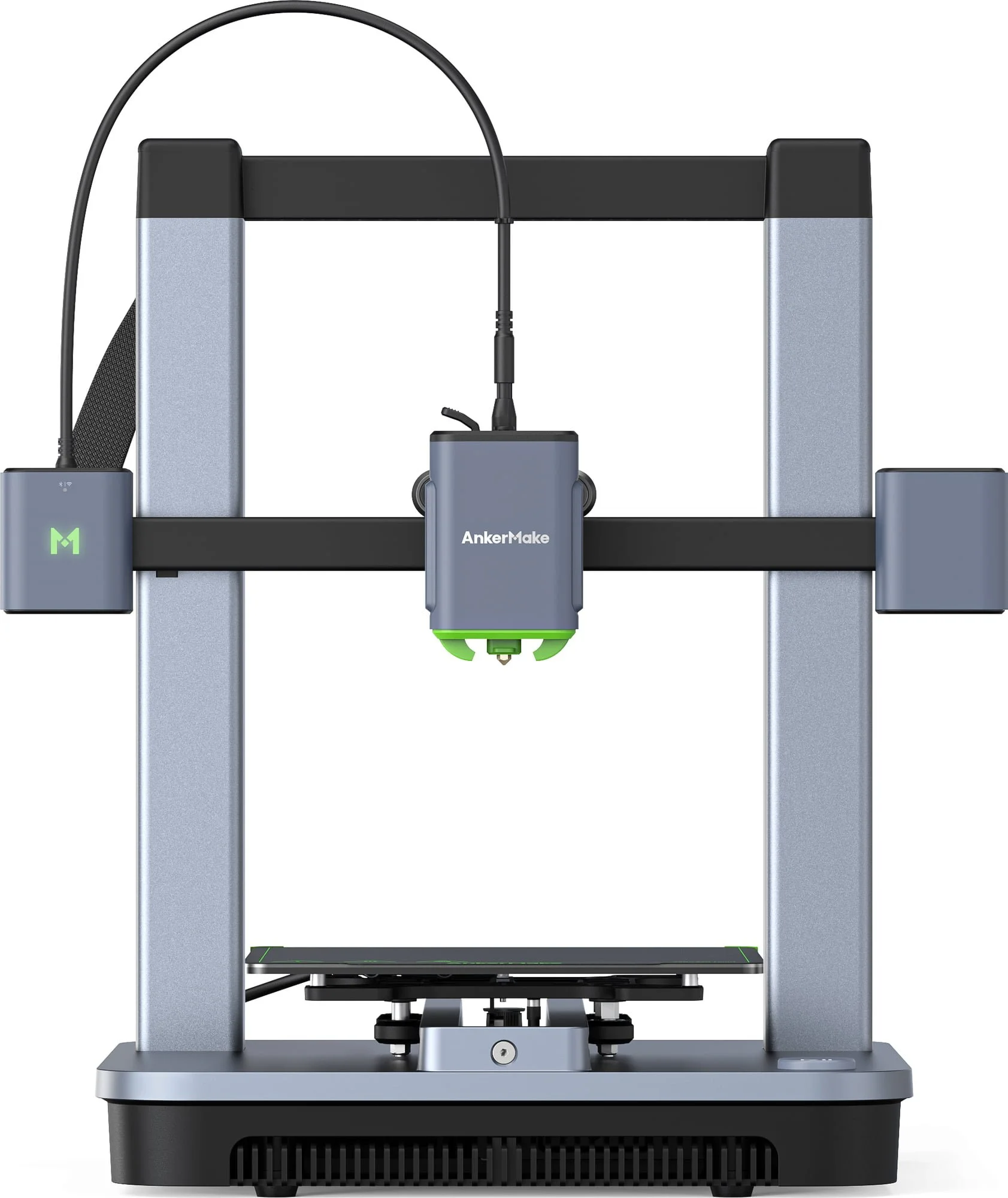AnkerMake M5C
Pros/Cons-
Pros:
-Small form factor
-Reasonably Priced
-Easy app for maintenance updates and printer info
-AnkerMake Studio is built on Prusa Slicer
-Can run on most filaments
-Easy to set up
Cons:
-Cannot modify base system
-Requires AnkerMake app or AnkerMake Studio to use
-Screen sold separately
-No way to add camera to M5C model and app reminds you that you do not own the M5 with the camera
Review-
Welcome one and all to my first review and this is of my AnkerMake M5C. Truth be told, I am fairly new to this space and a hobbyist at best. While I do have several years under my belt and have done significant research into 3D printing and different aspects of what different kinds of printing can do. Over the last few years and 2 printers, the closest other passion I can relate it to is the car community. There is the part of the community that likes to tinker with what they have, and then there is the part of the community that takes what they have and uses it as intended to do what they want without upgrading or tuning. The AnkerMake M5C is definitely part of the latter camp for better or worse. Let me explain.
The AnkerMake M5C is a printer that you can very easily get out of the box, set up within minutes and with the app on your phone start your first benchy and probably have great success. Then, when the filament runs dry, you order some more AnkerMake PLA+ and pop it in and your off to the races again. As long as you follow the instructions and do exactly as instructed in the app and use the built in tools and setting profiles, you can probably go the whole life span of the printer without many issues. You can’t really modify the printer itself beyond adding a USB drive to it to give it a library to print from remotely. (Side note: You can always use a filament dryer or replace the “wear items” with some other parts, but I will not really count those in my printer reviews since those are items that you can realistically use with pretty much every FDM style printer.) This is the kind of printer that as long as you’re following the rules, you can focus more on what do you want to print over will it print.
For those who want to print in PLA+ forever and want a straight workhorse, congrats! You have found a great 3D printer to work with. If you are maybe more adventurous though, or maybe you want to be able to do more… That’s where the story gets more interesting. This printer can go up to 300C on the hot end. For all you filament nerds out there, yes. That means you can run pretty close to any filament you want in it and it will gladly work with it. Even AnkerMake’s own marketing boasts being able to print up to Carbon reinforced Nylon! Just to be clear, I wouldn’t recommend necessarily running that kind of filament on a bed-slinger style printer(the bed moves on the x axis) without at least an enclosure to keep temperature and humidity at least a little under control, at the time of writing, this printer is on sale for $249! That is a $249 printer that can use any filament! Especially for those who want to have a solid printer and maybe even explore other filament options, this is an excellent printer! As with any more exotic filament beyond PLA+ though, you will need to do some trial and error with settings, maybe get a filament dryer and probably get an enclosure for it.
That being said, the only real draw back I have had with my printer so far has been the print size capability. The print capacity is 220x220x250 which is a bit smaller in the world of 3D printers although that C does stand for compact in M5C. While some people may not take this into consideration, I urge you to take a serious look into things you may want to print as this will come into play at some point during your 3D printing journey. Personally, as I print fidgets and clothing hooks and other gadgets for around the home, it is no problem, but once I started looking at anything costume or even designing a printable shelf, size became the biggest limitation since now I was confined to the space of the relatively small print bed. Some engineers, artists or printing enthusiasts may find it a blessing due to its small size, but others who need more room may need to either print in parts or find a different print all together.
All in all, for the new comer into the space, I would recommend this printer if your plan is to print mainly smaller items and you want to start learning 3D printing with the bumpers on. If you are more intermediate user, I would recommend this printer only if you are looking for a smaller workhorse that doesn’t need a bigger print bed and are ok with a Tesla style you can change some things, but most of what your basic replacements will be from AnkerMake. If you are an advanced user, I would recommend this printer for desk use and single filament prototyping if you are on the engineering side or for maybe print farm use on the manufacturing side. There are definitely plenty of reasons to like this printer and a recommendation at every level as long as your expectations are clear.
